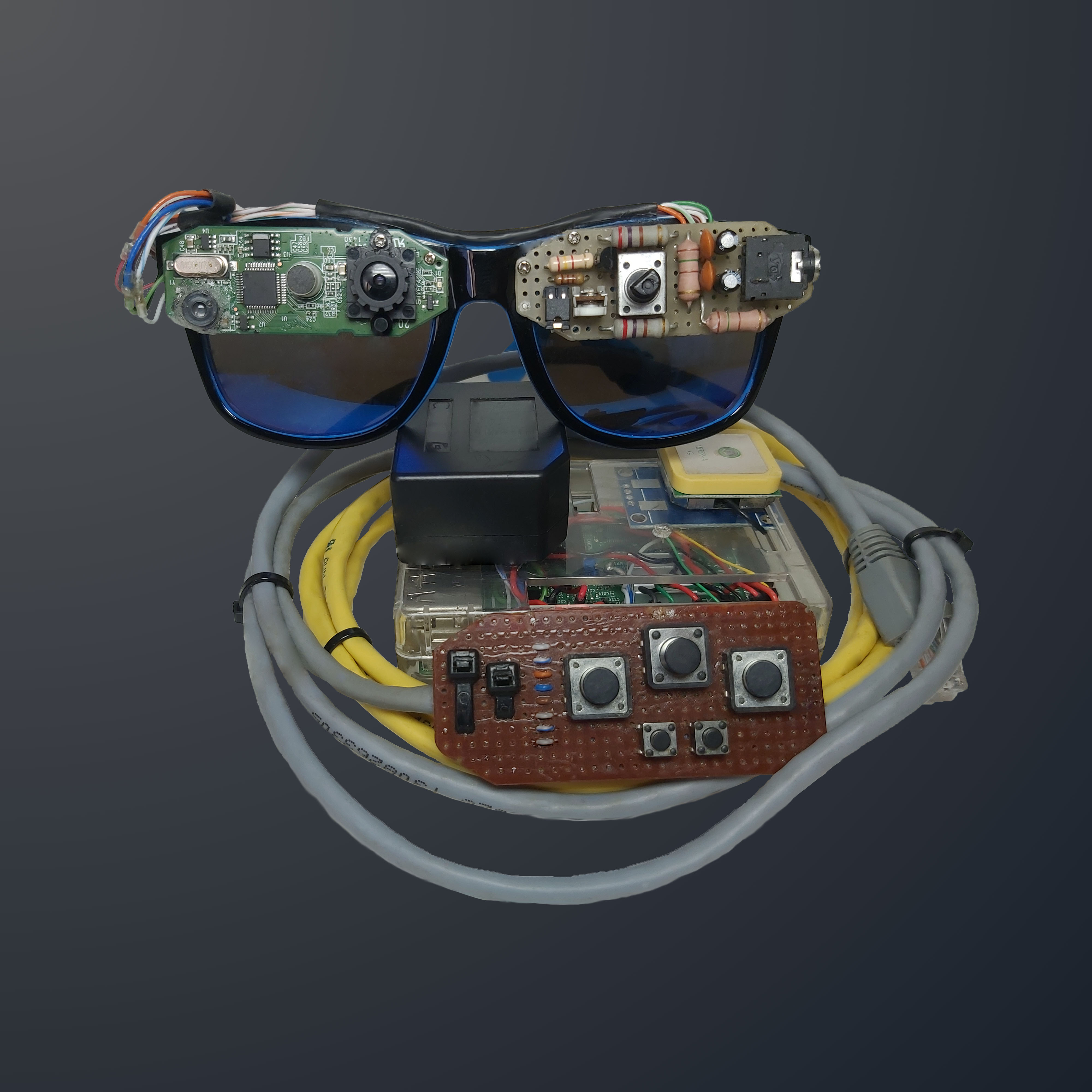
ExoEye is a project in form of a glasses, whose primary purpose is to help people with visual disabilities to detect:
The project was originally intended only for people with Category 5 of visual impairment (irreversible blindness with no light perception). But it turned out that people with other categories of visual impairment were also interested in the project, so I have naturally adjusted the hardware a bit to satisfy the requirements for all categories of visual impairment. I did that by re-designing the smaller circuits, so the person who uses it can see through the glasses while they are operating. (which was not possible with the first version)
The user can also do as he/she prefers:
To get the project operational, the user should follow these 5 simple steps:
ExoEye is powered ON automatically when you connect it to the power source, and it will emit a short double-beep sound after it finishes booting. (all the sounds are delivered through the 3.5mm stereo audio jack on the glassess)
All the actions are available through the custom-made controller, that sits in user's hand.
In short, this mode allows users to detect obstacles on their way, by releasing a constant beam of sound to the user, whose frequency changes with the obstacle's distance. So when the obstacle is closer the sound will be higher pitched, and on a contrary lower pitched.
To recognize the objects it uses the custom-made on board machine learning model that I have developed and trained on most common indoor items, so it works offline, but the downside is that its quite limited a bit slow on lower budget devices like RPI. The other better implementation would be to use some Could-based AI computing service to give it maximum power and speed, but in that case, it would require from users to have a reliable internet connection which cuts the client interest by half, so I went with the first solution… (Californians wouldn’t get this, but for the rest of the world, the internet is still quite unreliable ;)
Periodically calls the single click action.
Works offline, but requires from user to download and maintain a map of the target country.
Periodically calls the single click action, with an interval of ten seconds.
Note: All the modes can be turned off by clicking any of the buttons, except the ones used for volume control.
C/C++, Python, Javascript, Bash .
Greetings! 👋🏻
I am Daniel Petrovich, a seasoned entrepreneur,
dedicated to expand digital boundaries for both companies and
individuals.
